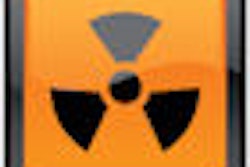Wednesday, December 2 | 10:40 a.m.-10:50 a.m. | SSK03-02 | Room S502AB
Chest pain patients represent an expensive and time-consuming healthcare burden, fraught with risk. Whether coronary CT angiography (CCTA) is a solution to this problem will be discussed in this Wednesday scientific session presentation.It's known that coronary CTA workup can sometimes save money, time, and radiation over other approaches, and avoid unnecessary catheterizations. But is this true for all patients? What is the proper role of nuclear studies in the age of CTA?
Age, gender, and clinical presentation have been used to estimate the prevalence and severity of flow-limiting coronary artery stenoses in these patients, but the point at which CT becomes cost-effective is unknown.
Dr. Ethan Halpern and colleagues from Thomas Jefferson University in Philadelphia built a decision-tree model to calculate the expected costs and radiation exposure for evaluation of arteries with myocardial perfusion scintigraphy (MPS) alone, coronary CTA alone, and CTA over a range of stenosis severities. The model was based on literature and assumed that catheterization was performed only when CTA and MPS were both positive.
As long as the prevalence of CAD was below 50%, CTA reduced both costs and radiation below that of MPS, and reduced the need for catheterization. "We showed decreases in both radiation exposure and costs prior to nuclear studies in patients with suspected coronary artery disease," Halpern told AuntMinnie.com.




















